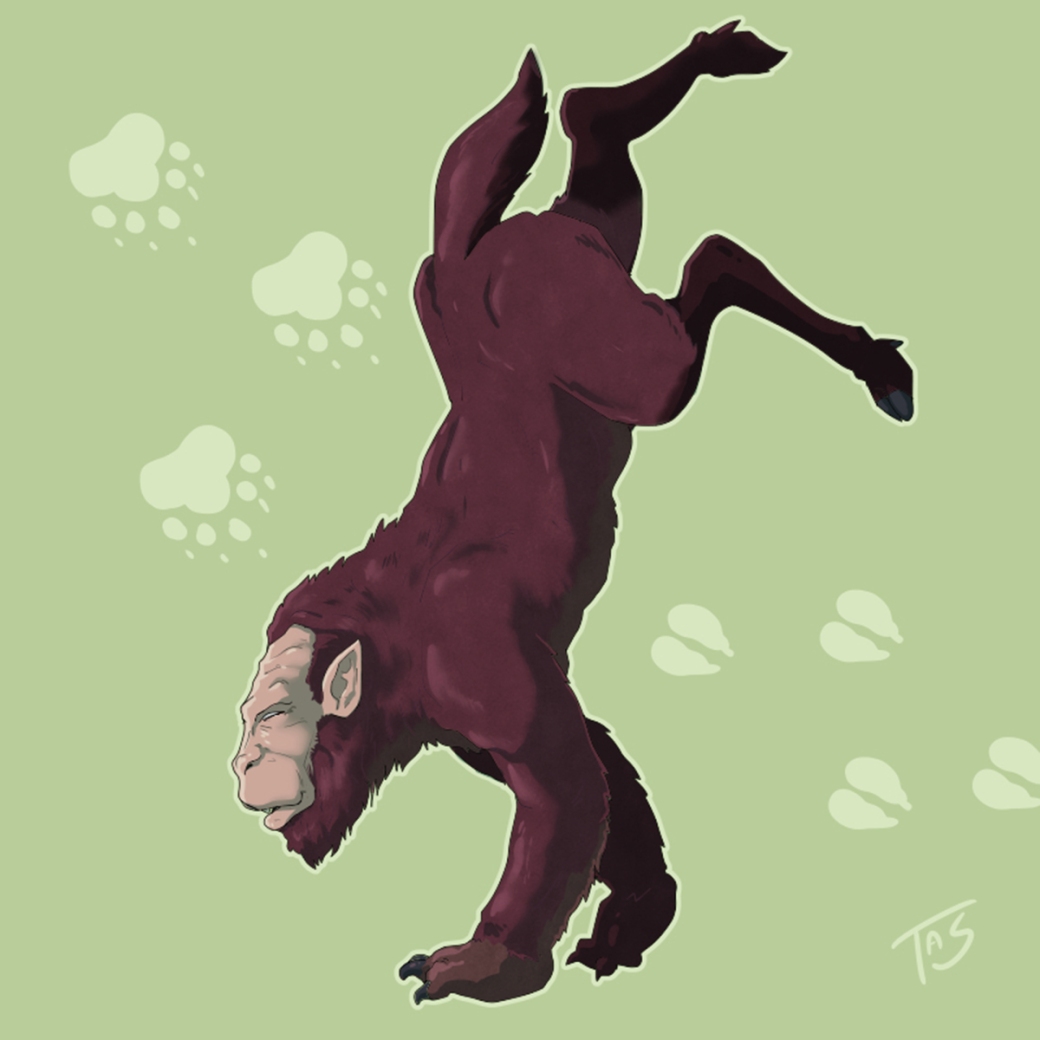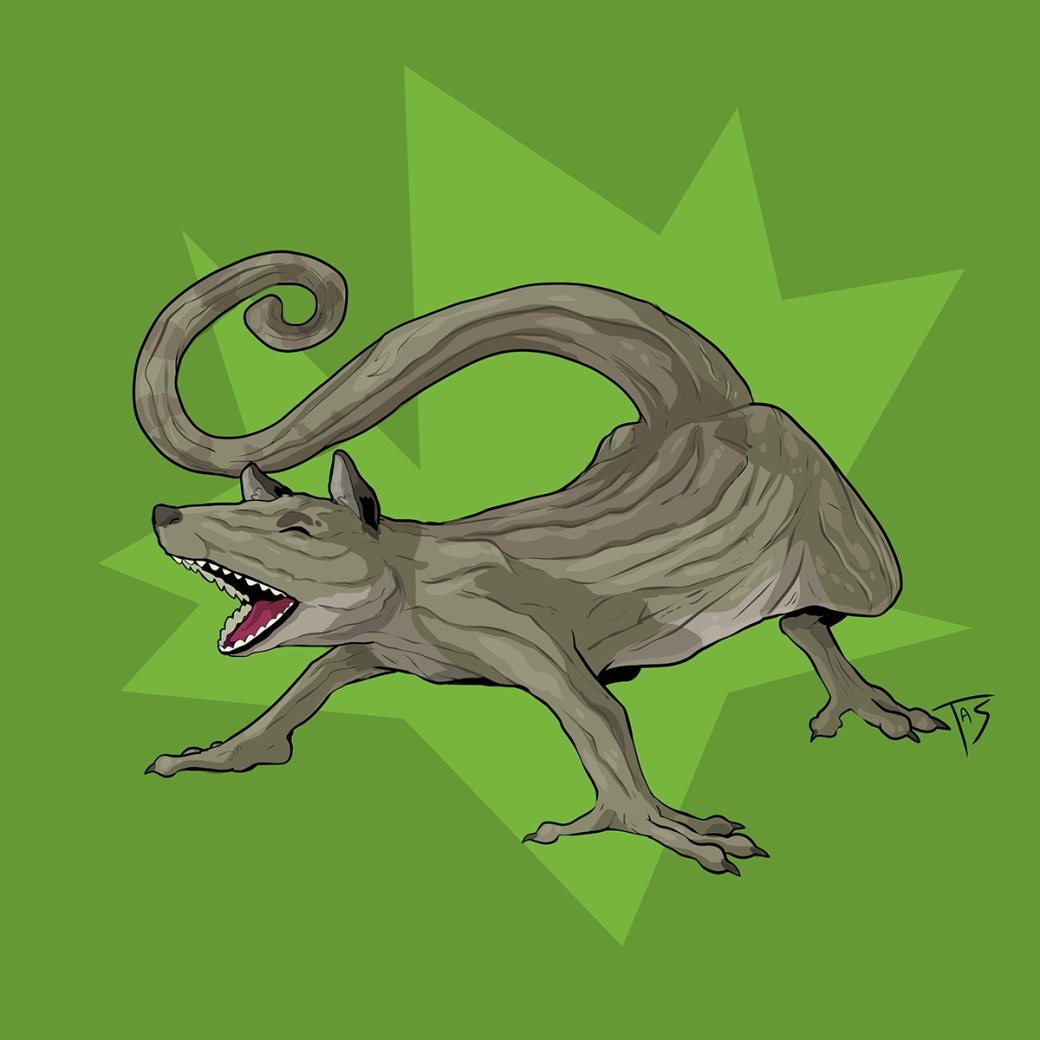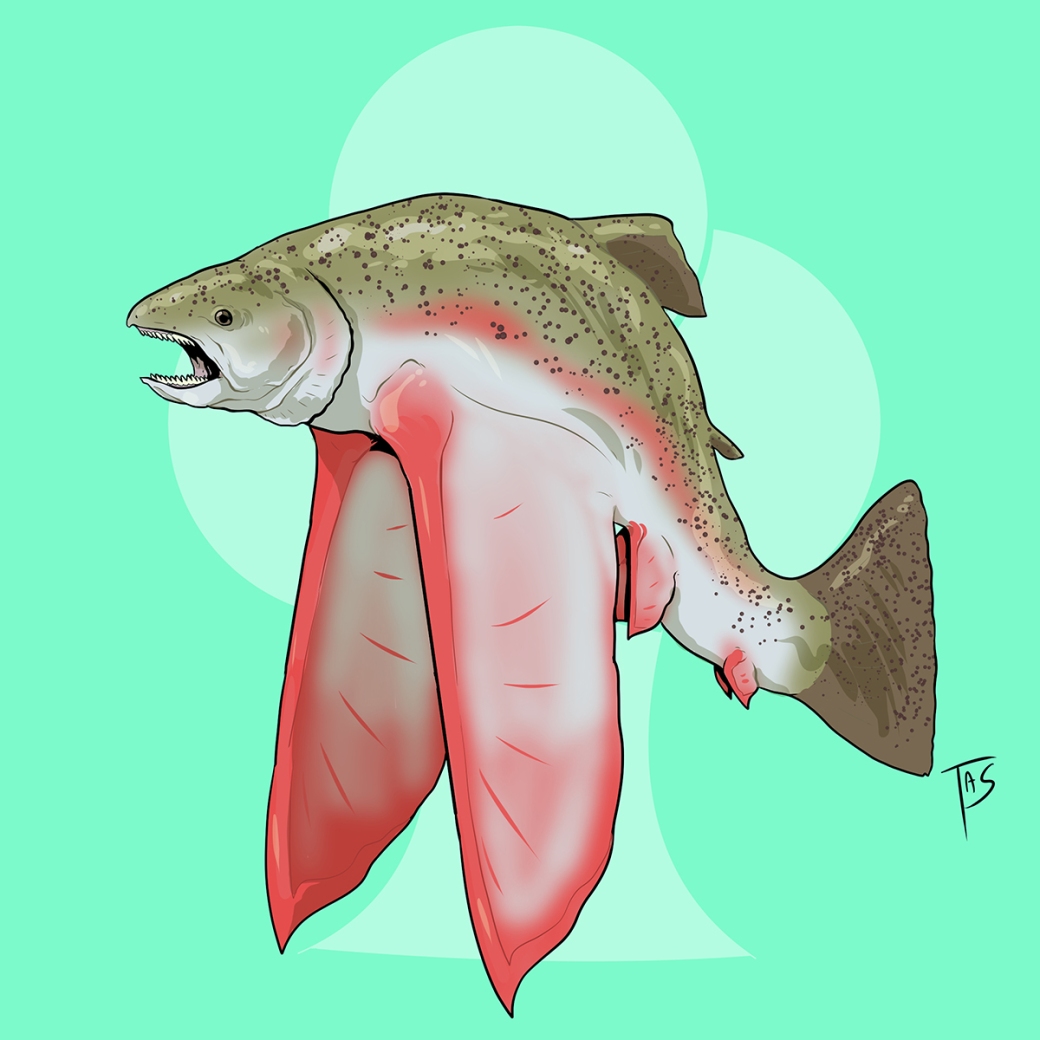
Argopelter
Region of origin: Northern US forests
An ape-like fearsome critter that makes use of hollowed-out trees as both its home and its ammunition, the argopelter uses its whip-like arms to hurl large branches and pieces of the trees with lethal force down at the heads of loggers and lumberjacks who it feels are invading its territory. The argopelters are largely solitary creatures, due in part to scarcity of the owls and woodpeckers that are their food source keeping them spread out, and also a low reproduction rate as their pups are only born on the 29th of February.









